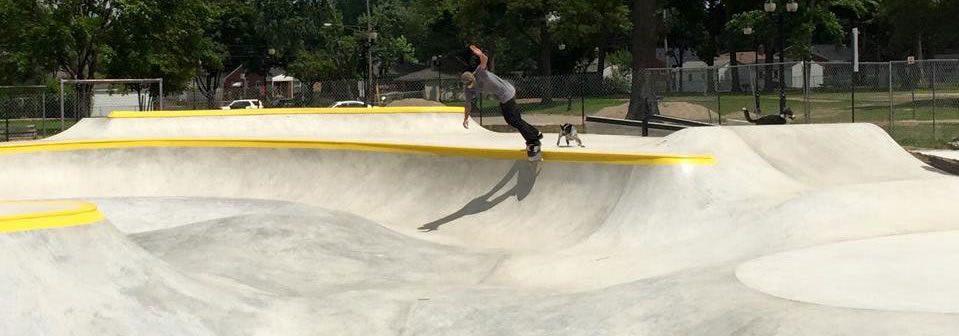Myths vs. Reality

10 Myths About Skateboarding
1. SKATEBOARDING IS FOR KIDS
Skateboarding is extremely popular with kids but not all skateboarders are young. Skateboarding’s greatest heroes, people like Rodney Mullen and Tony Hawk, are well into their 30s. It is one of the few sports where the young and old share experiences and participate as equals.
2. SKATERS ARE A SMALL PERCENTAGE OF OUR ATHLETIC COMMUNITY
Skateboarding is one of the fastest growing sports in the U.S. and has surpassed baseball and football as the healthy activity of choice. There are about 13 million skateboarders in the U.S. with a 10% annual increase in participation during the previous 3 years. Skateboarding is here to stay.
3. SKATEPARKS ARE NOISY
Skateparks are not loud. A properly constructed concrete Skatepark generates about as much sound as a conversation between two people. Wooden parks are slightly louder. But still much less than ordinary automobile traffic.
4. SKATEPARKS ATTRACT DELINQUENTS
Any public park can attract unsavory elements, but skateparks often deter disruptive behavior and vagrancy because skaters populate the park. Parks that are remote, secluded or seldom used by the community are the ones that get abused. Without a Skatepark in the vicinity, skaters are forced into the streets.
5. SKATEPARKS ARE MESSY
Like any athletic activity, skateboarding will generate refuse. In skateparks that benefit from strong community support such as Burnside (Portland, OR) or Ballard (Seattle, WA), most litter removal is done by the skaters themselves. Professional skateparks allow the skating community to take pride in their facility.
6. SKATEPARKS ARE EXPENSIVE
A world-class concrete Skatepark averages $40/square foot. Even at full capacity all day, all year, a properly built park won’t show signs of overuse. Compared to the relatively limited use of a tennis court or baseball field, it’s an efficient and popular use of public park funding. Long-term maintenance expense is minimal.
7. SKATEPARKS ARE PLAYGROUNDS
Skateparks are sophisticated structures that require particular attention to detail. In order to be safe and efficient, skateparks need to be designed and built by experienced, knowledgeable contractors. Skateboarding is a high-energy, athletic activity and requires surfaces smoother than your average sidewalk, proper alignments, and safe traffic control. An experienced Skatepark designer should be able to address these needs directly. Skateboarders themselves can usually offer testimony to the most respected Skatepark designers. Great skateparks are the ones that get used and maintained by skaters.
8. CONCRETE SKATEPARKS ARE MORE EXPENSIVE THAN WOODEN SKATE OBSTACLES.
The immediate cost of a concrete Skatepark is generally 20% more than wooden or steel skate obstacles. However, the maintenance and inspection costs of skateable objects (loosening of structures, wear and deterioration, etc.) make concrete the long-term preferred choice of city planners and skateboarders.
9. SKATEPARKS ARE DANGEROUS
Among the most popular sports, skateboarding is relatively safe. Safety studies show that skateboarding related injuries fall below other sports-related injuries. As with any athletic activity, nobody should skate beyond their ability.
10. THERE ARE ALREADY SKATEPARKS NEARBY
Many communities continue to ignore the need for a safe, accessible place that skaters of all ages can reach. Though older, mobile skateboarders often travel to their favorite parks, younger skaters are frequently limited to whatever is nearby. Is there a Skatepark in your community? If not, your community is the Skatepark.
